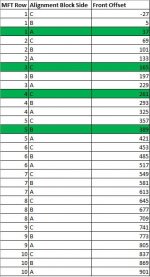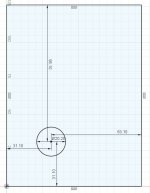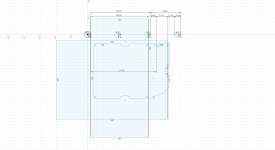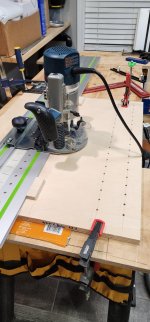Bugsysiegals
Member
- Joined
- Mar 19, 2016
- Messages
- 893
The Festool LR32 works great for drilling 32mm spaced shelf pin holes 37mm from the front edge; however, falls short in easily aligning the guide rail in increments of 32mm from the front edge when drilling drawer slide holes. After a bit of thought, I designed a little jig which when used in combination with a MFT style table top easily solves this problem and thought I’d share it with you all.
Forewarning, this isn’t the greatest quality, it’s not edited to be quick and to the point, and I know I repeat myself several times (turn the speed up to 1.5x), but I thought it was worth sharing and hopefully it’s of some value to somebody ...
Forewarning, this isn’t the greatest quality, it’s not edited to be quick and to the point, and I know I repeat myself several times (turn the speed up to 1.5x), but I thought it was worth sharing and hopefully it’s of some value to somebody ...





